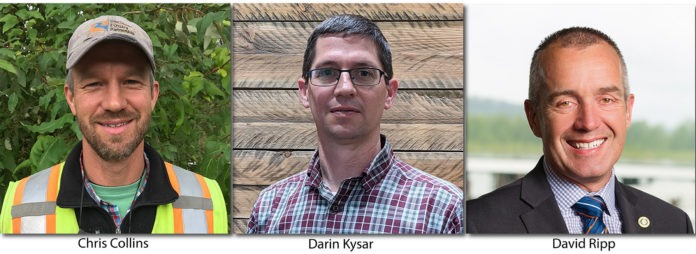Starting May 1, you are invited to visit the largest habitat restoration project ever completed on the lower Columbia River. Steigerwald Lake National Wildlife Refuge, a beloved urban wildlife sanctuary visited by more than 90,000 people per year, has been closed to the public since 2020. During the closure, heavy equipment removed an old levee, built new setback levees, demolished an ineffective fish ladder and returned Gibbons Creek to its natural, unconfined state. With the help of local students and volunteers, contractors planted more than half a million new trees and shrubs in the newly restored floodplain. The project greatly improves hiking, biking and wildlife viewing opportunities at this popular urban refuge.
The Steigerwald Reconnection Project was an enormous and ambitious undertaking – other agencies previously considered the project, only to put it back down after assessing the magnitude of work that needed to be done. We would mislead you if we said that the Lower Columbia Estuary Partnership and the project’s primary funder, Bonneville Power Administration, did not first hesitate when considering the complexities of this 965-acre project, but the reward, and the importance of this project to the region, were too great to ignore.
For the Estuary Partnership, an environmental nonprofit committed to engaging communities through the protection and restoration of lower Columbia River ecosystems, the Steigerwald Reconnection Project checked all the right boxes.
For Rotschy Inc., the project not only was a perfect fit, but an exciting business opportunity. Massive earthworks projects fit easily in our wheelhouse, but the opportunity to construct 1.6 miles of setback levees was an exciting challenge and a strategic addition to our company’s portfolio. As a bonus, the refuge is located a short distance from our main offices; as a family business, projects that allow our employees to return home to their families in the evening rather than check into a hotel are very important to us.
The economic benefits of this project will continue to accrue long after the refuge reopens to the public. The reconstructed levee system removes 124 acres of industrial and municipal land from the FEMA-mapped floodplain. Protecting the Port of Camas-Washougal’s industrial park and the Washougal wastewater treatment from Gibbons Creek floodwaters will save the Port an estimated $40,000 annually. The project also removed failing water control infrastructure along Gibbons Creek that the Port and U.S. Fish and Wildlife Service would have had to spend millions dredging and repairing. Additionally, the refuge’s expanded recreation offerings are expected to draw over 100,000 visitors to the refuge each year, a surefire boon to local businesses.
The Steigerwald Reconnection Project is another example of how the health of our rivers is tied to the economic wellbeing of our region. Seventy percent of the money spent to restore floodplain habitat at Steigerwald stayed in Clark County and more than 90% was spent within a 50-mile radius of the refuge. The $32 million restoration project generated over 550 local jobs and added $75M to the local economy.
While the Steigerwald Reconnection Project was unprecedented in size, the economic benefits of this effort are not unique. An economic report of habitat restoration projects in Oregon found that $.0.80 of every $1 spent on habitat restoration stays in the county where the project is located and $0.90 stays in the state. Also, habitat restoration supports a diverse array of careers: planners, engineers, scientists, builders, heavy equipment operators, and skilled laborers. The Steigerwald Project’s construction phase also provided a safe, outdoor working environment during the COVID-19 pandemic.
The lower Columbia River has lost a staggering amount of floodplain habitat and as a result many of our communities are at risk of flood damage. A bittersweet byproduct of these facts is that it creates the opportunity for efforts like the Steigerwald Reconnection Project to become a long-term economic driver for our region. With each acre of restored floodplain, our region improves the flood-resilience of our communities, strengthens salmon runs, and creates well-paid, local jobs.
Authored by Chris Collins, Restoration Program Lead with the Lower Columbia Estuary Partnership and Project Manager for the Steigerwald Reconnection Project; Darin Kysar, Project Manager with Rotschy Inc.; and David Ripp, CEO of the Port of Camas-Washougal.









